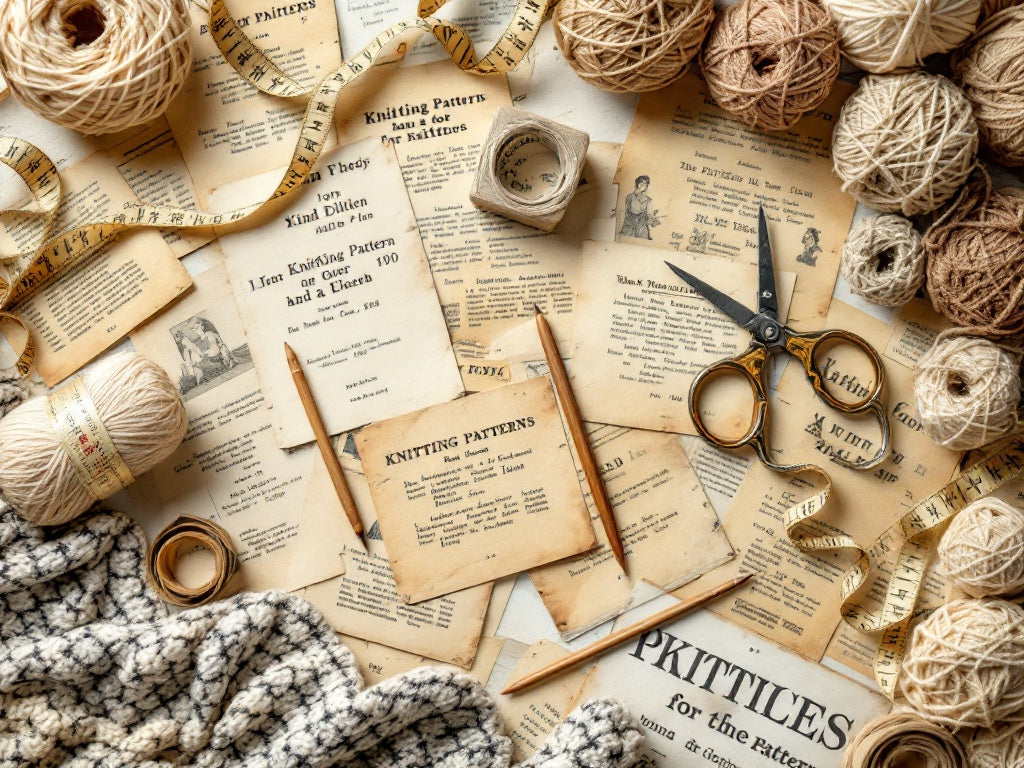
The Charm and Challenges of Vintage Patterns: A Modern Maker's Guide
Share
The Charm and Challenges of Vintage Patterns: A Modern Maker's Guide
There's something undeniably magical about opening a yellowed pattern book from decades past or unfolding a handwritten pattern from grandmother's craft box. Vintage knitting and crochet patterns offer a unique window into crafting history, but they also come with their own set of delights and difficulties. Let's unravel both sides of working with these treasured instructions from the past.

For the 70s-style standing woman image: "Step back in time with vintage patterns that bring retro style into the modern era. Just like this 1970s-inspired look, classic designs have a way of staying forever fashionable. 🧶✨ #VintageKnitting #HandmadeStyle
The Enchanting Benefits
1. Timeless Designs
Many vintage patterns feature classic silhouettes and intricate details that have stood the test of time. These enduring designs often showcase techniques that have been refined over generations, resulting in pieces that look just as stunning today as they did fifty years ago.
2. Historical Connection
Working from a vintage pattern creates a tangible link to crafters of the past. There's something profound about following the same instructions that someone might have used to create a sweater during World War II or a delicate doily in the 1920s.
3. Unique Finished Products
In a world of mass-produced items, creating from vintage patterns ensures your pieces will be truly one-of-a-kind. You're less likely to encounter someone wearing the same handmade sweater at your local yarn shop!

For the cozy reading nook scene: "The perfect corner for diving into treasured vintage pattern books, where every page turn might reveal your next heirloom project. Surrounded by yarn and illuminated by warm light - this is where old meets new in the crafting world. 📚🪑 #CraftingNook #VintageKnitting
The Creative Challenges
1. Terminology Changes
Crafting language has evolved significantly over the decades. What was once called a "plain stitch" might now be known as stockinette, and vintage British patterns might use entirely different terms than their American counterparts.
2. Yarn Substitutions
Modern yarners face the task of finding suitable replacements for discontinued yarns. Vintage patterns often call for materials that are no longer available, requiring careful consideration of weight, fiber content, and drape when selecting alternatives.
3. Size Adaptations
Sizing conventions have changed dramatically over the years. What was once considered a "medium" might be quite different from today's standards, requiring careful measurements and potentially complex pattern adjustments.

Tips for Success
- Always make a gauge swatch - this becomes even more critical when working with vintage patterns
- Keep a vintage terminology guide handy
- Don't be afraid to make modifications to suit modern preferences
- Document your adjustments for future reference
- Join online communities dedicated to vintage pattern work - their collective wisdom is invaluable

The Final Stitch
Working with vintage patterns is like embarking on a crafting adventure - complete with its own treasure map (the pattern), mysteries to solve (the terminology), and rewards to reap (the finished piece). While it may require more patience and problem-solving than modern patterns, the satisfaction of creating something with historical significance makes it all worthwhile.
Remember, every challenge you overcome while working with a vintage pattern adds to your skills as a crafter and helps preserve these valuable pieces of fiber arts history for future generations.
